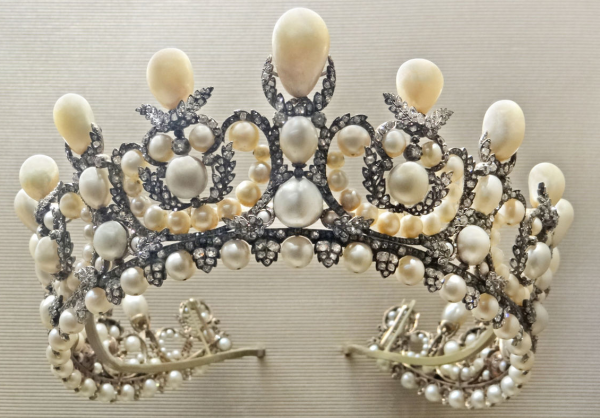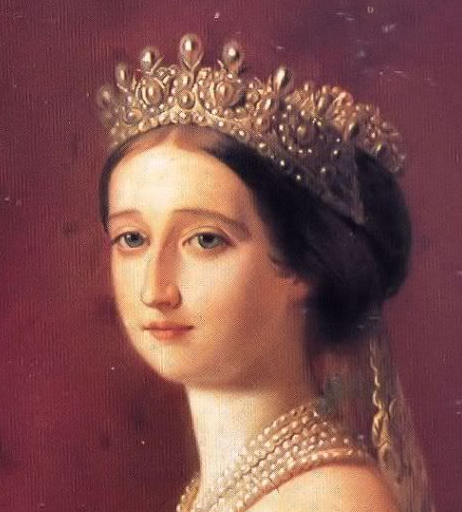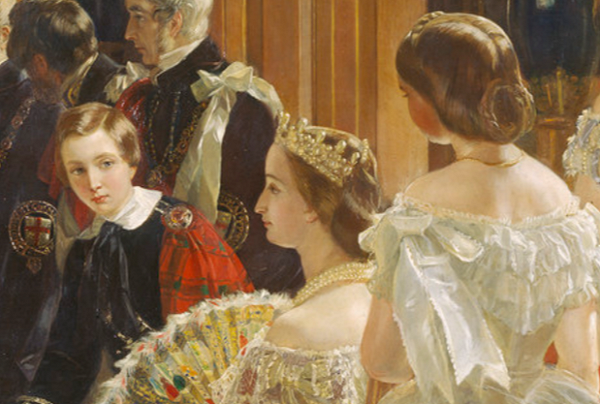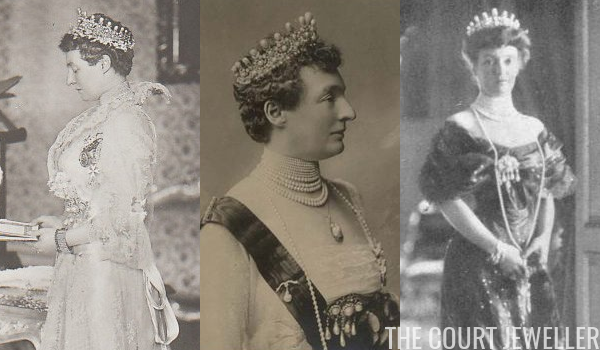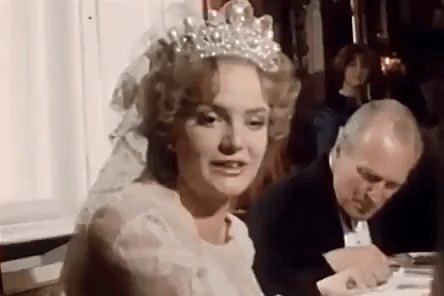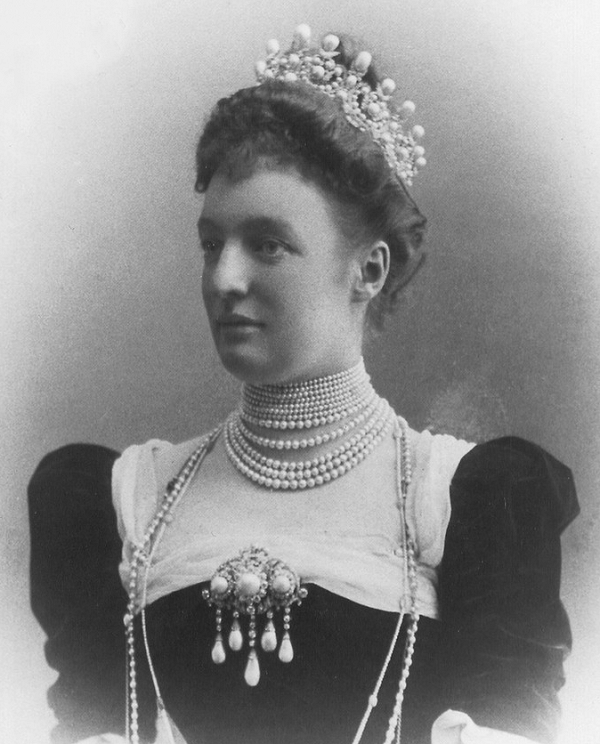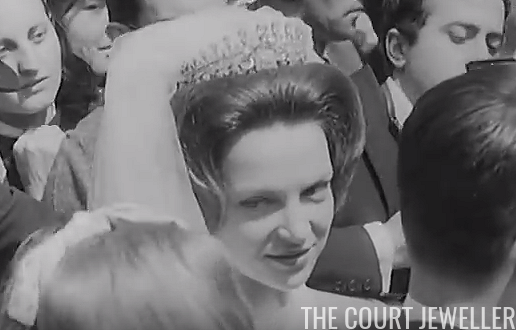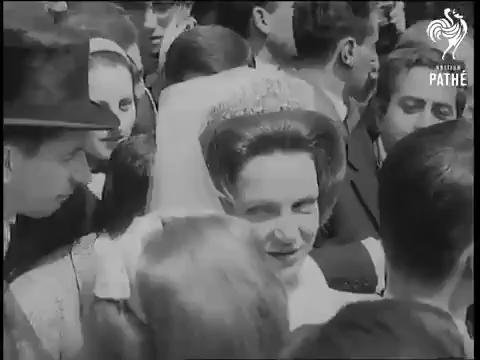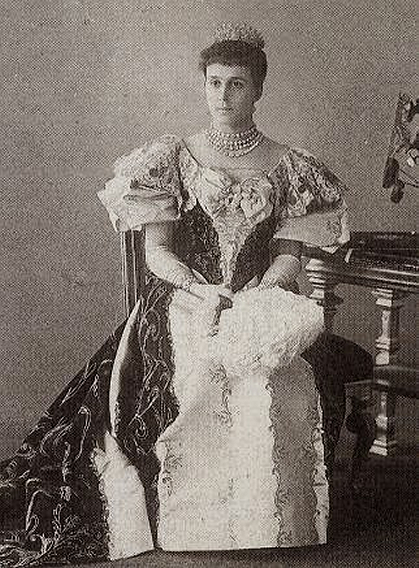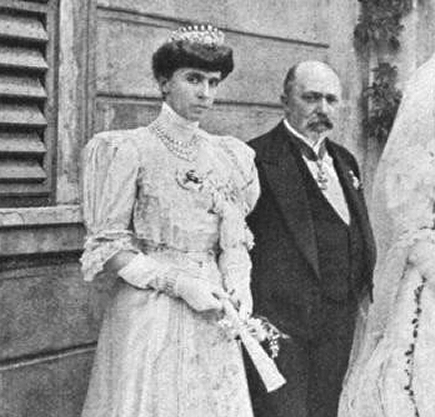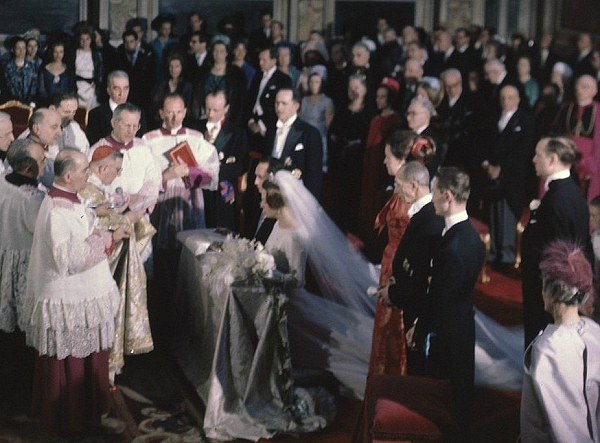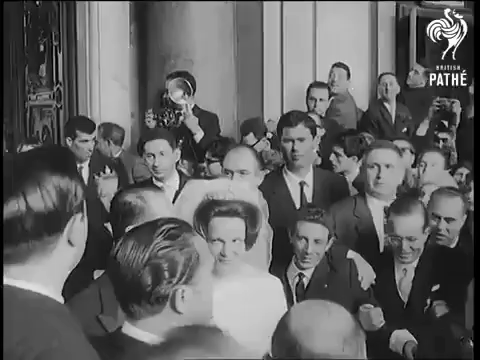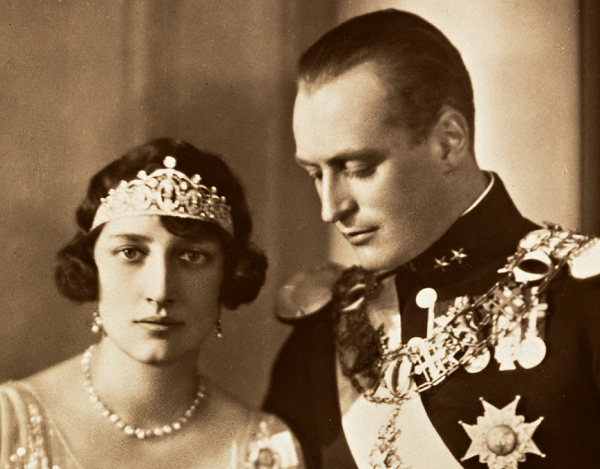 |
| Crown Princess Märtha of Norway (with Crown Prince Olav) wears the Vasa Tiara, 1929 (National Archive of Norway/Wikimedia Commons) |
The Norwegian monarchy may be a young one, but the current royal family has quite a stash of jewelry, thanks to their descent from Danish, British, and Swedish royalty. Today’s sparkler, the Vasa Tiara, came into the Norwegian vaults through the current king’s mother, Crown Princess Märtha, who was royal in her own right.
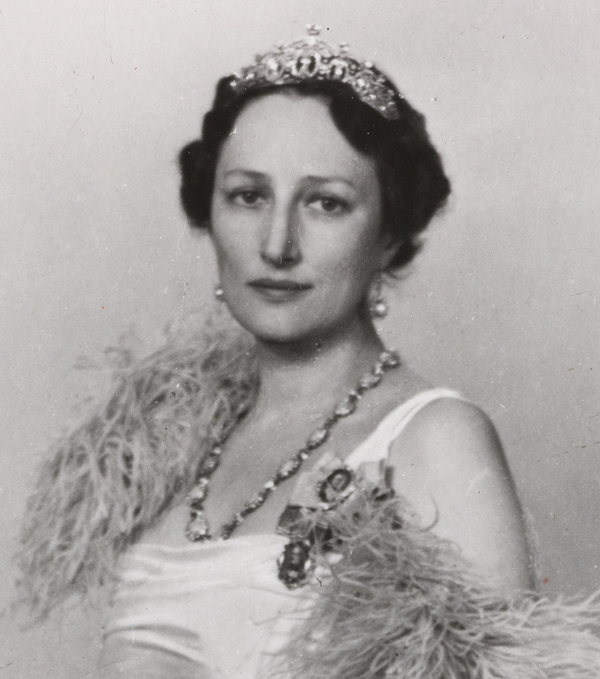 |
| Crown Princess Märtha wears the Vasa Tiara (National Archive of Norway/Wikimedia Commons) |
You might be asking yourself why a tiara named after an old Swedish royal dynasty is currently worn by a Norwegian princess; the simple answer is that said princess’s mother happened to be born a Swedish princess. When Princess Märtha of Sweden, daughter of Prince Carl and Princess Ingeborg, married the future King Olav V of Norway in 1929, the city of Stockholm decided they needed to give their princess a proper Swedish send-off in the form of a tiara. (They did the same for Märtha’s sister, Astrid, on her marriage to a future king of Belgium, but that diamond and pearl sparkler, the Stockholm Tiara, hasn’t been seen in a very long time.)
The diamond and platinum tiara was made by C.F. Carlman. It takes its name from the heraldic symbol of the Vasa dynasty, which is incorporated into the central element of the tiara. The Vasas hadn’t ruled in Sweden for centuries by the time the Bernadottes showed up on the scene in 1810; the last Vasa ruler was the rather infamous Queen Christina. But the Bernadottes can claim kinship to the Vasas, because they were deliberate about marrying royal women who descended from that old Swedish line. Two Bernadotte queens, Joséphine of Leuchtenberg and Victoria of Baden, were Vasa descendants, which means that Princess Märtha was, too.
In the photograph above, taken about the time of Olav and Märtha’s wedding, you can see Märtha’s left hand resting on the Vasa Tiara, which sits in its case among her wedding gifts.
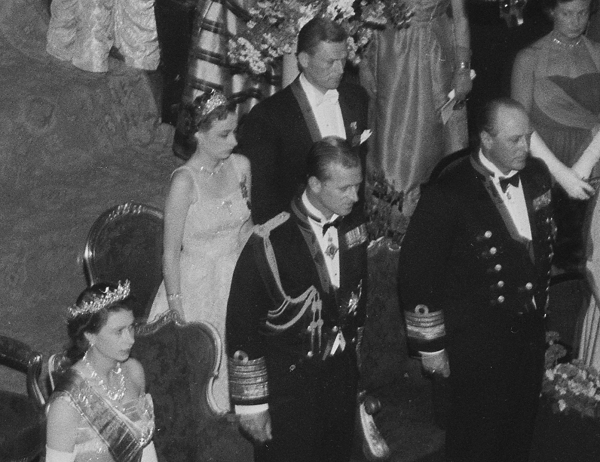 |
| Princess Ragnhild (standing behind the Duke of Edinburgh) wears the tiara at Oslo’s National Theatre during the British state visit to Norway, June 1955 (National Archive of Norway/Wikimedia Commons) |
The new Norwegian crown princess wore her new tiara on a regular basis, and she also loaned the Art Deco sparkler to her two daughters, Ragnhild and Astrid. The tiara was originally intended to be one of those fashionable 1920s forehead bandeaux, as you can see in the portrait of Olav and Märtha at the top of this post. Thankfully, it transformed nicely to a more traditional “top of the head” tiara.
Crown Princess Märtha never became Norway’s queen. She died of cancer in 1954, and her children officially divided up her jewels (and those of the late Queen Maud) several years later, after King Harald married Queen Sonja. Astrid was the lucky recipient of this tiara. But Trond Norén Isaksen has noted that Astrid essentially treats the piece like a lifetime loan. She plans to have the diadem returned to the royal vaults after her eventual death — hopefully at a time far, far in the future.
